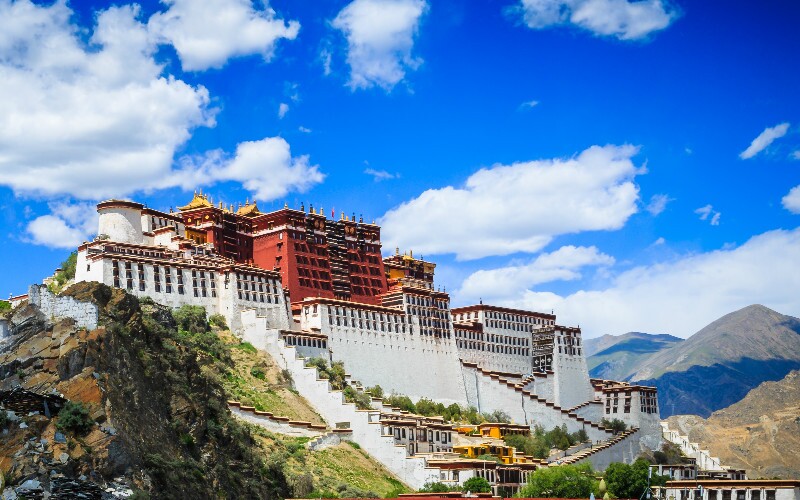20 Free Tips To Authentic Chinese Culinary Adventures
20 Free Tips To Authentic Chinese Culinary Adventures
Blog Article
Top 10 Tips For Exploring The Regional Cuisines In China
1. Learn about the eight Culinary customsTip: Get familiar with the eight most popular Chinese cuisines : Sichuan Cantonese Shandong Jiangsu Fujian Hunan Anhui Zhejiang. Each has its own distinct recipes, flavors and methods.
It aids you in planning your dining experiences by studying your taste preferences.
Con: It's difficult to remember the specifics of each dish.
2. Local specialties are accepted.
Take a look at the regional dishes, like Peking Duck (in Beijing), Xiaolongbao or Hot Pots in Chengdu.
Pro: It guarantees a true and culturally rich dining experience.
Con: Your exploration of other foods may be limited when you're in one particular area.
3. Taste the regional Flavors
Tips: Sichuan cuisine is spicy and numbing. Cantonese food is light and fresh while Jiangsu dishes are delicate and sweet. Pick dishes based on your preferences and tolerance for spice.
Pro: Helps you avoid eating out at restaurants that might not suit your tastes.
Con: Certain flavors may be an acquired taste and require a bit of experimentation.
4. Explore Street Food
Be adventurous and try local food items. Try something new and local food items.
Pro street food is cheap, convenient, and offers an opportunity to see the daily life.
Cons: Hygiene could be an issue at times; choose vendors that are highly turnover.
5. Learn Basic Dining Etiquette
Being aware of Chinese dining habits is essential. For instance, having meals with family members, and not putting chopsticks on the rice are just a part of this.
Pros: This shows that you value the local culture while enriching the dining experience.
Con: It takes time to learn and adapt to a new etiquette.
6. Get local recommendations
Tips: Locals are often aware of the top restaurants or food within their region. Do not be afraid to ask help.
It helps to avoid tourist traps, while still finding hidden gems.
Con: Language barrier may hinder communication.
7. Be open to new ingredients
Use your imagination to discover unique ingredients in regional food preparations. Be curious about new foods.
Pro: Increases your knowledge of Chinese culture by broadening your taste buds.
Cons: Certain foods may not meet your preferences or dietary needs.
8. Allowing Dietary Restriction
Tip: You can use Mandarin phrases to communicate preferences or allergies. For example, "Wo bu Chi Rou" (I do not consume meat).
Pro: A custom dining experience to suit your needs.
Cons: Certain cuisines offer very few options to meet certain dietary preferences.
9. Serve regional beverages alongside your food.
Try the local drinks like tea from Fujian or Baijiu in north China.
Pro: Increases the depth of food and complements the food.
Con: Strong tastes, such as baijiu, aren't for everyone.
10. Avoid Overordering
Tip A tip Chinese dishes are served family-style. So order conservatively. If you're looking for more, you can add it.
Cons: Food waste can be reduced and a variety of dishes may be sampled.
Con: It may be tempting to purchase excessively due to the wide variety of options that is available.
Discovering regional cuisines is a fantastic way to discover China.
Many Flavors to Try - Discover a wide variety of flavors ingredients, techniques, and ingredients.
Cultural awareness: Know regional identity and traditions.
Cheap: There are plenty of local dishes and snacks that are delicious to eat.
Memorable Experiences: Savouring iconic dishes from their place of origin can create lasting memories.
Pros and Cons of Exploring Local Cuisines in China
Hygiene Concerns Some street food or restaurants may not be up to international sanitation standards.
Language barriers. Menus or explanations in Mandarin may hinder the ability to place orders.
The unfamiliar tastes and textures certain people certain tastes or textures could be new to you.
Restrictions on diet: Those with extreme food sensitivities or strict vegetarians can struggle to eat in certain regions.
You can navigate any challenge with these strategies, and remaining adventurous. Take a look at the most popular view travel tips for this destination for website recommendations including entertainment in beijing, anren ancient town, chinese stone lion the common ornament in chinese traditional architecture, xi an travel tips, xi an travel tips, shaoxing wine the best yellow wine in china, ancient football in china cuju in ancient china, shopping in nanjing, naked marriage in china the most fashionable wedding style for the 1980s, four great classical novels.html and more.
Top 10 Tips On Seasonal Visits When Visiting Famous Temples In China
1. Go during off-seasons, usually from November to January. There are less tourists, and the temperature is cooler.
Pro It is less crowded and offers an unhurried and peaceful experience.
Cons: The weather may be colder than usual, making temple tours in the outdoors less enjoyable.
2. Prepare yourself for extreme weather.
Tips: Temperatures during different seasons may be drastically different. Winters can be brutally cold, but summer temperatures are usually scorching. Prepare according to the weather forecast.
Pro: Prepare yourself for any weather conditions and enjoy your journey in peace.
Cons: It is difficult to prepare to deal with extreme weather, especially when you are traveling in a small amount.
3. Visits during Spring and summer for the vibrant Flora
Go to temples in spring and summer to see stunning gardens and flowers in bloom. Also, you can enjoy lush landscapes surrounding temples.
Beautiful scenery enhances the experience of visiting the temple grounds.
Con Cons: Summers in the United States can be very hot and overcrowded. This is especially the case during national holidays.
4. Consider Festivals and Special Event
Plan your visit to coincide with traditional festivals such the Chinese New Year (January/February), or the Mid-Autumn Festival. It is the ideal opportunity to go to a temple since it has specific rituals and ceremonies.
Pro: There are a lot of temples offering traditional and exciting activities. This is an excellent opportunity to discover a new worldview.
Con: Temples can be packed and hotel prices can rise during festival season.
5. Avoid Peak Holiday Seasons
Tip Beware of visiting during most popular tourist times (e.g., Chinese New Year, Golden Week in October) when temples can be packed with local and international tourists.
Pro: Enjoy a peaceful vacation without the crowds.
Con: You may be unable to attend some of the festival's special events if you're in the area during peak times.
6. Make sure to check for Temple Closures in the winter months.
Tips: Some temples might have limited hours or be closed during the winter months, especially in remote regions or in northern areas. Always verify the time ahead.
You can cut down on unnecessary trips by preparing ahead.
Con: There may be a reduction in hours of operation or temples completely closed during construction work.
7. Early Morning Visits to the Beach During the summer
If you're planning to visit during summer, try to arrive early in order to stay away from the heat of midday. Temples are usually open from dawn, and this time is more peaceful and quiet with fewer tourists.
Pro: Cooler and more peaceful experience, without crowds.
Cons: It requires an early morning wake up which isn't ideal for everyone.
8. Make sure you are prepared for rain in the summer
The summer season can bring a lot of rains, particularly in southern China. If you're planning to visit during this time bring an umbrella or rain gear so you can stay dry.
Pro: Even in rain, you can still be awestruck by the beauty of the temple.
Cons: Rain could cause outdoor activities to be disrupted, and the temple grounds can get slippery.
9. Visit the Mountain Temples in Autumn
Tip: The autumnal foliage provides a stunning backdrop for temples in mountains (e.g. Mount Wutai and Mount Emei), as it is a time when the weather is nice.
Pros: The cooler temperature makes hiking and outdoor exploration more pleasant, and the mountain views are stunning.
Con: Popular mountain shrines continue to draw large crowds on weekends and holidays.
10. Consider the Lunar Calendar for Specific Events
TIP: Many Chinese temples use the lunar calendar, and a lot of ceremonies or occasions are linked to lunar calendar dates. To attend events like Buddha's Birthday and the Lantern Festival in China, you must check out the lunar calendar.
Pro: A unique experience in culture and deeper understanding into local rituals of the spiritual.
Cons Cons: The lunar calendar could make you plan your trip with more care and might not coincide with the events taking place at the moment.
Benefits of a Seasonal Trip to Chinese Temples
A smaller crowds on off-season visits provide an unwinding and contemplative experience.
Cultural Events: Festivals provide an opportunity to learn more about the local cultural and religious traditions.
Scenic beauty: Visits in spring or fall can offer stunning scenery with lively gardens that surround temples.
Tempel exploration is more pleasant during the winter and autumn months.
The cons of seasonal Chinese Temple Visits
Unpredictable Weather: Winter can be cold and summer could be hot. Both weather conditions could affect your well-being.
Temple Closures: Some temples will close during extreme weather, or when they have restricted hours.
Afraid of Crowds at Festivals: Popular festivals and holidays are often accompanied by large crowds, making it difficult to feel the peaceful ambience of the temple.
Certain events are restricted - certain events and ceremonies are only held during certain seasons.
Planning your visit to the famous Chinese temples during the right time of year can help you to have a more meaningful and memorable experience. Knowing the dynamics of the seasons can make sure you get the most enjoyment from your trip, whether are looking for peace and quiet or cultural celebrations. View the top view information about this spot for site advice including shopping in dunhuang, shaoxing wine the best yellow wine in china, lijiang tour maps, eating in fuzhou, anren ancient town, top three buddhist temples in chengdu, tips for identifying copyright, chinese knot which has a long history and a symbolic meaning, shopping in fuzhou, the master of nets garden the hall of ten thousand books and more.